|
|
British/English Ships on Exhibit
|
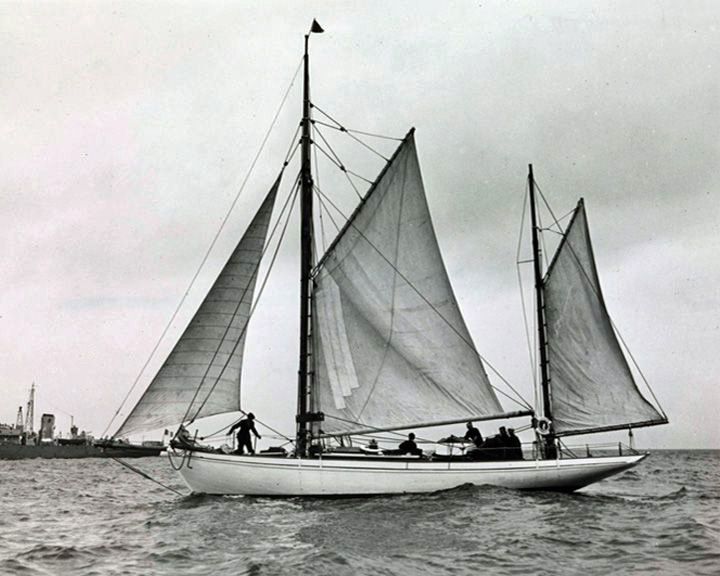 (Another (Another Asgard — British yacht She is most noted for her use in the Howth gun-running of 1914. She was used for sail training by the Irish Navy in the 1960s and as the national sail training vessel from 1969 to 1974. LAUNCHED: 1905 → FATE: The restored Asgard is on permanent display in Collins Barracks, Dublin. |
 Belfast, HMS — British town-class cruiser One of only three surviving bombardment ships which supported the D-Day Normandy Landings in 1944 of World War II, firing probably the first or second salvo. She spent 33 days in support of the D-Day landings and fired over 4,000 6-inch and 1,000 4-inch shells. LAUNCHED: 1938, March 18 → FATE: After much preservation work, she is on exhibit, located on the River Thames next to Tower Bridge at the Port of London. |
 Britannia, HMY — British yacht Former Royal Yacht of the British monarch, Queen Elizabeth II, and where Prince Charles and Diana took their honeymoon. During her service as Royal Yacht conveying members of the Royal Family and various dignitaries, she steamed 1,087,623 nautical miles or 2,014,278 km. LAUNCHED: 1953, April 18 → FATE: Decommissioned December 11, 1997, now a museum ship at Leith, Edinburgh, Scotland. |
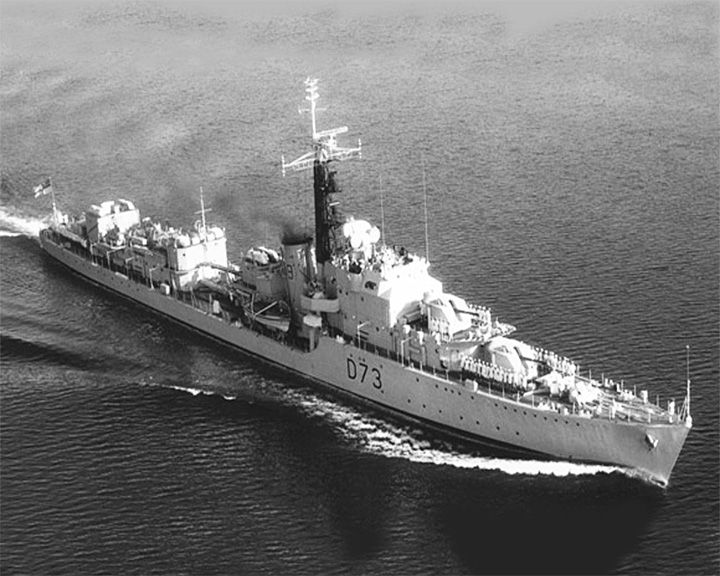 Cavalier, HMS — British C-class Destroyer Because of her high speed, she escorted the RMS Queen Mary and RMS Queen Elizabeth carrying troops across the Atlantic Ocean. In the summer of 2009 the Chatham Historic Dockyard Trust made available accommodation on board the ship for youth groups who wish to stay on board and experience life on board a Royal Naval Destroyer. LAUNCHED: 1944, April 18 → FATE: Preserved as a museum ship since 1998, now at the Chatham Historic Dockyard |
 Discovery — British three-masted barque The ship that carried Scott and Shackleton on their first successful journey to the Antarctic. She was locked in the ice of the Antarctic for two years. The ship was eventually freed in February, 1904 by the use of controlled explosives. LAUNCHED: 1901, March 18 → FATE: Museum ship in Dundee, Scotland. |
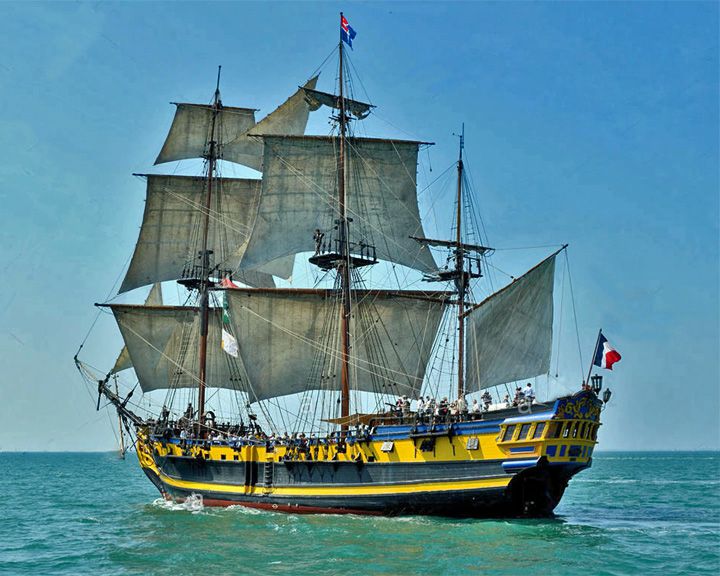 Etoile du Roy — British frigate, sixth-rate Stand-in for several different ships for the British TV series Horatio Hornblower, 1998-2003. The three-masted frigate was built specifically to represent a generic Nelson-age warship, with her design inspired by HMS Blandford built in 1741. LAUNCHED: 1997, September → FATE: Sold to a French company and now on exhibit at Saint-Malo, Brittany. |
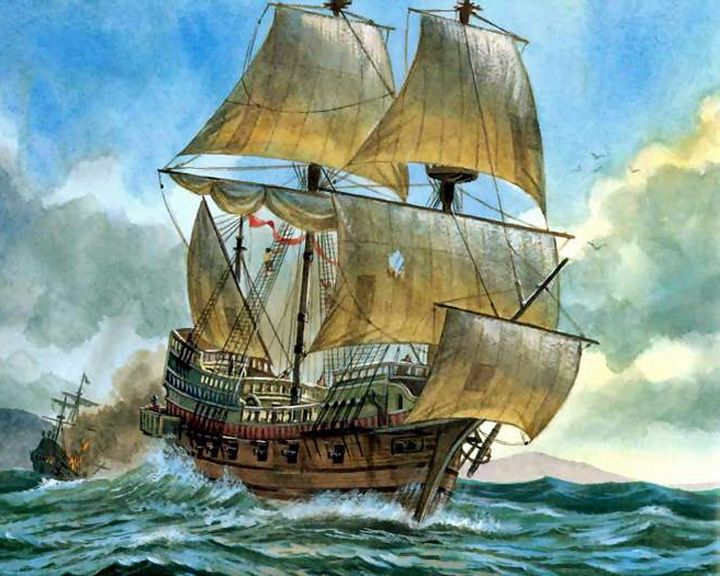 Golden Hind — English galleon Second ship to circumnavigation of the globe between 1577 and 1580, captained by Sir Francis Drake. Several replicas were built, the latest the Golden Hinde lauched in 1973. LAUNCHED: 1576, probably → FATE: In dry dock at Deptford, England as a museum piece, rotted away after decades around 1650. |
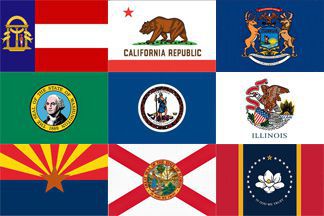

|
Page 2
|
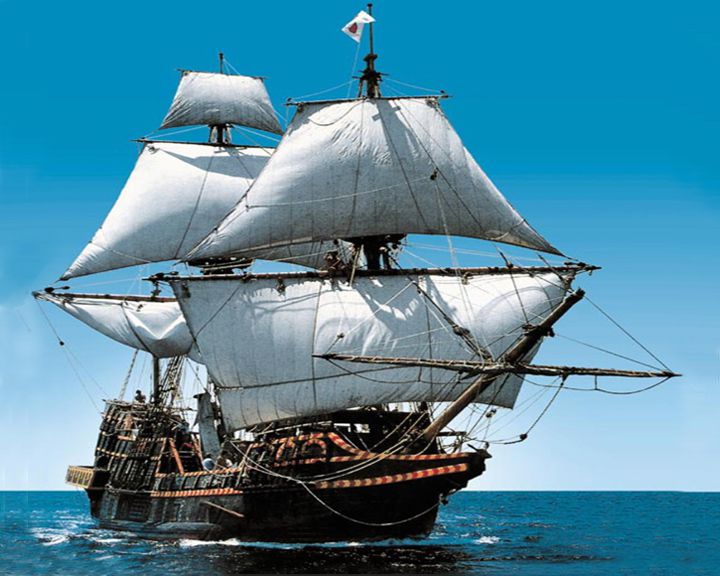 Golden Hinde — English galleon A full-size replica of the 1577 Golden Hind and appeared in several movies. She has travelled a distance equal to more than five times around the globe. Like Francis Drake's ship, she has circumnavigated the globe. LAUNCHED: 1973 → FATE: Since 1996 she has been berthed at St Mary Overie Dock, Southwark, London. |
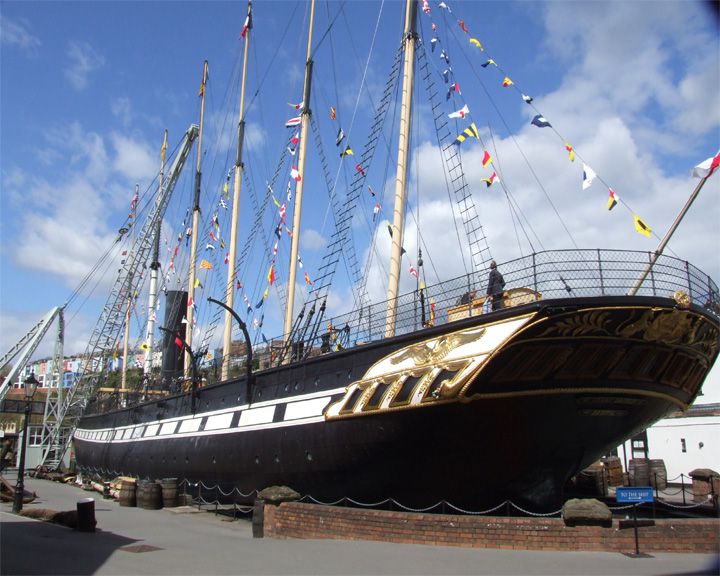 (Another (Another Great Britain, SS — British steamship, passenger ship First steamer to cross the Atlantic. Also first built of iron and with a screw propeller. She ran aground in 1846 and was sold for salvage, repaired and revised. In 1881 she was converted to sail. In 1937 she was retired and scuttled. In 1970 she was recovered and eventually restored as a museum ship. LAUNCHED: 1845, July 18 → FATE: Now a museum ship in Bristol Harbour. |
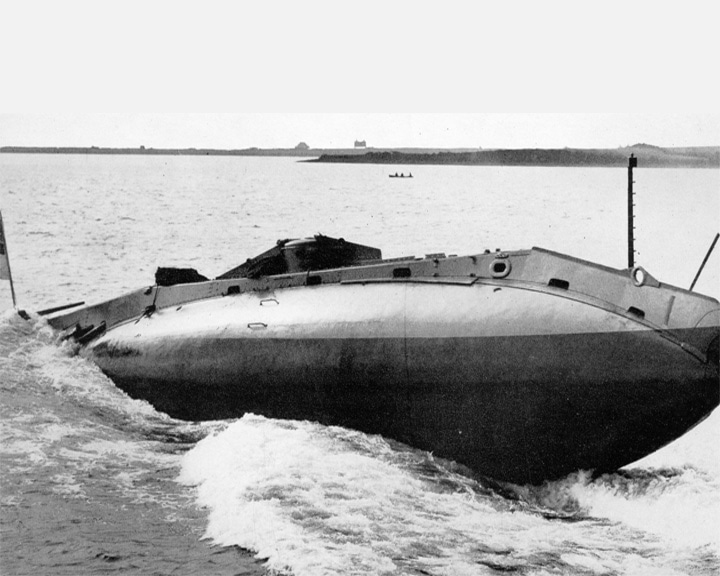 Holland I, HMS — British submarine The first submarine commissioned by the Royal Navy. While being towed to the scrapyard she sank in bad weather off the coast of Eddystone lighthouse. LAUNCHED: 1901, October → FATE: On display at Royal Navy Submarine Museum, Gosport. |
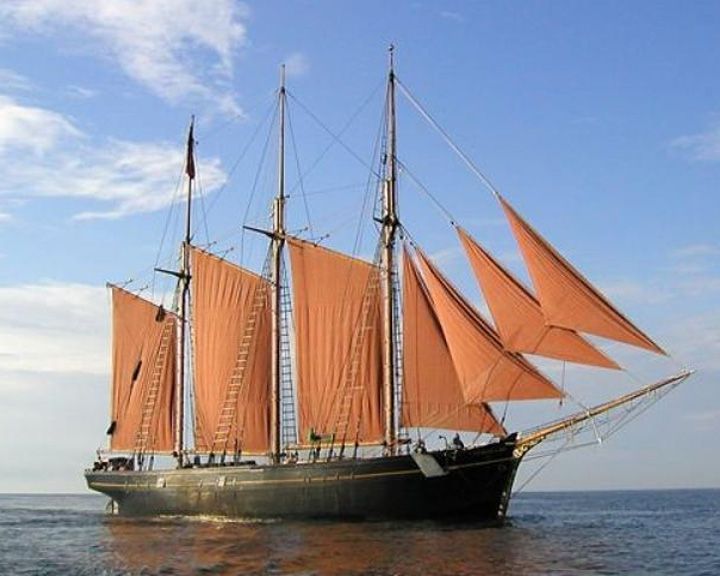 Kathleen and May — British three masted schooner Last remaining British built wooden hull three-masted top sail schooner. Originally equipped with the first known fitting of Appledore roller reefing. After years of service, during restoration in 2000, 70% of the original planking was stripped from the frames, enabling most of her internal timbers to later be refitted. LAUNCHED: 1900, April → FATE: Restored and based in Bideford on the River Torridge. |
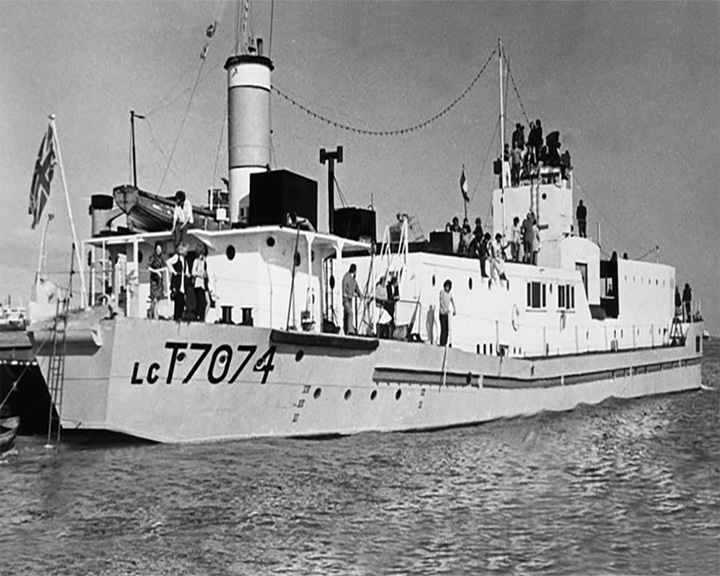 LCT7074, HM — British landing craft, tank (LCT) The last amphibious assault ship in the United Kingdom for landing tanks, other vehicles and troops on beachheads. De-commissioned in 1947 she was renamed Landfall and became the club ship for the Master Mariners’ Club of Liverpool. The craft was later converted into a riverfront nightclub. LAUNCHED: 1944, April 4 → FATE: Salvaged and restored by 2020, then moved to a permanent display at Portsmouth's The D-Day Story museum. |
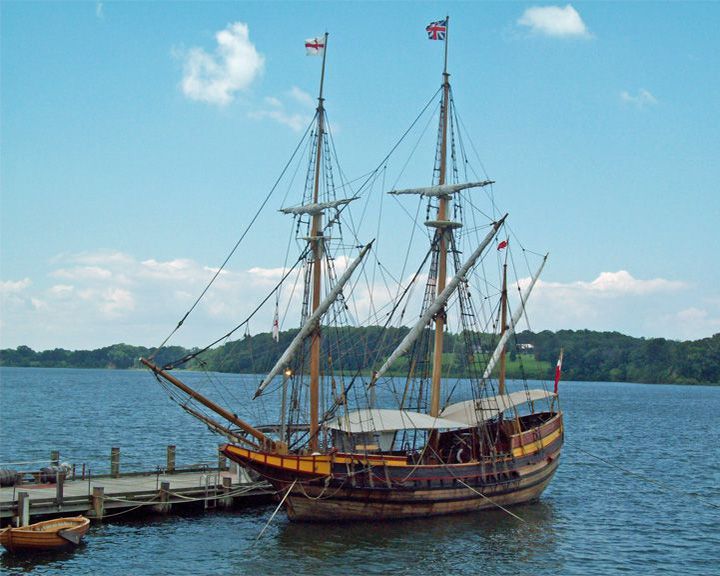 Maryland Dove — American merchant vessel Replica of the Dove, one of two early 17th-century English ship that, in 1634, brought the first settlers to what is now Maryland. The original Dove was the smaller of the two ship, used in shallow waterways along the coast. The accompanied ship with 140 passengers was the Ark. LAUNCHED: 1978, August 18 → FATE: On exhibit at Historic St. Mary's City and occasionally other ports. |
 Matthew — English caravel Sailed by John Cabot, first European to reach North America. Apparently, she was a small ship of fifty tons carrying twenty men and food for seven or eight months. LAUNCHED: 1496, or earlier; replica launched 1996 → FATE: Original ship, unknown; replica on display at M Shed Museum, Bristol, England. |
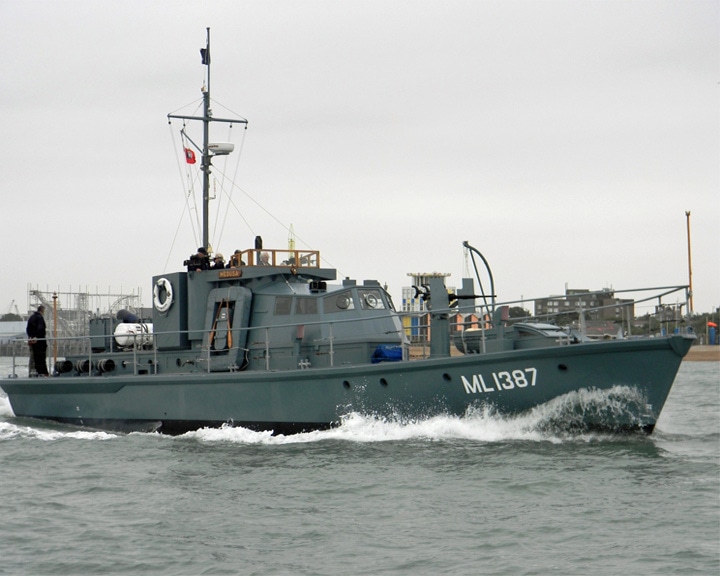 Medusa, HMS — British Harbour defence motor launch She served at D-Day as a Navigation Leader, marking German minefields to be cleared by minesweepers, and then staying at the entrance of the cleared channel to direct parts of the invasion force. For more, see Museum Ships. LAUNCHED: 1943 → FATE: On exhibit at Gosport in England. |
|
Page 3
|
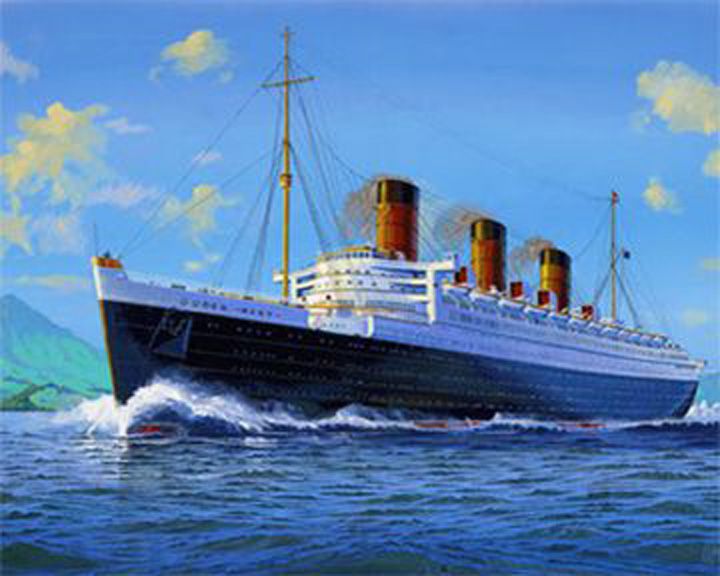 Queen Mary, RMS — British ocean liner Once dominated transatlantic passenger service with sister ship Queen Elizabeth. She was used in World War II as troop transport carrying up to 15,000 passengers at a time. Featured in the 1972 movie The Poseidon Adventure and the 1981 movie Goliath Awaits. LAUNCHED: 1934, Septmber 26 → FATE: After sailing nearly 4 million miles, she was retired in 1967 and berthed in Long Beach, California as a museum ship and hotel from 1974 to present. |
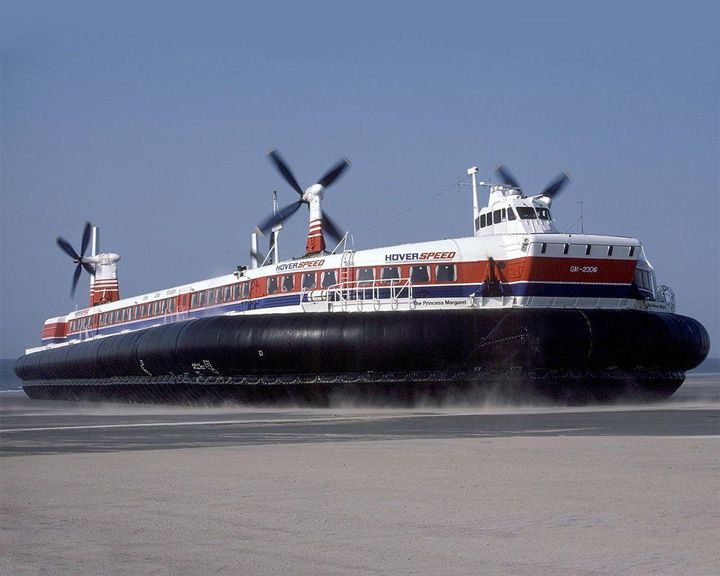 SN.R4 — British Mountbatten class hovercraft Was the largest civil hovercraft ever built, carrying 254 passengers and up to 30 cars. She is the only surviving hovercraft that served English Channel traffic from 1968 to 2000. The others, Sir Christopher, Sure, Swift, Princess Margaret, and The Prince of Wales, were all scrapped. LAUNCHED: 1968 → FATE: Preserved and on static display at the Hovercraft Museum at Lee-on-Solent, England. |
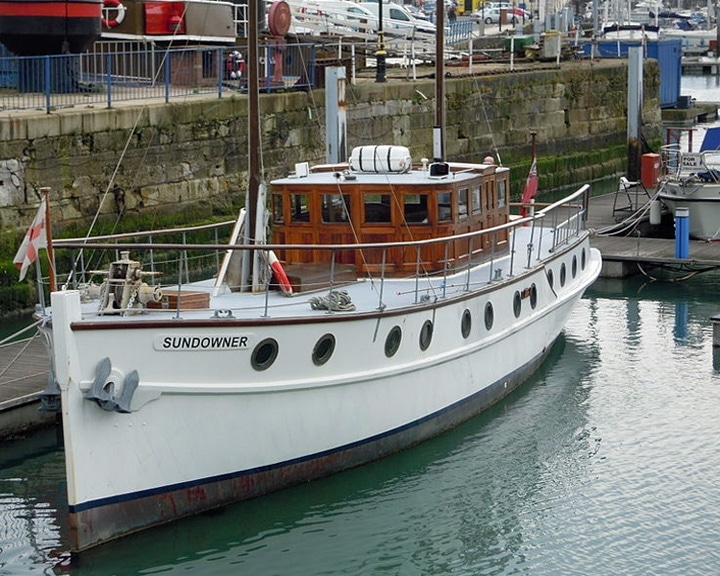 Sundowner — British motor yacht She participated in the Dunkirk evacuation as one of the "little ships" as well as a number of commemorations of the event. She was formerly owned by Charles Lightoller who was Second Officer aboard the ill-fated RMS Titanic and survived. LAUNCHED: 1912 → FATE: A museum ship at the Ramsgate Maritime Museum in Southern England. |
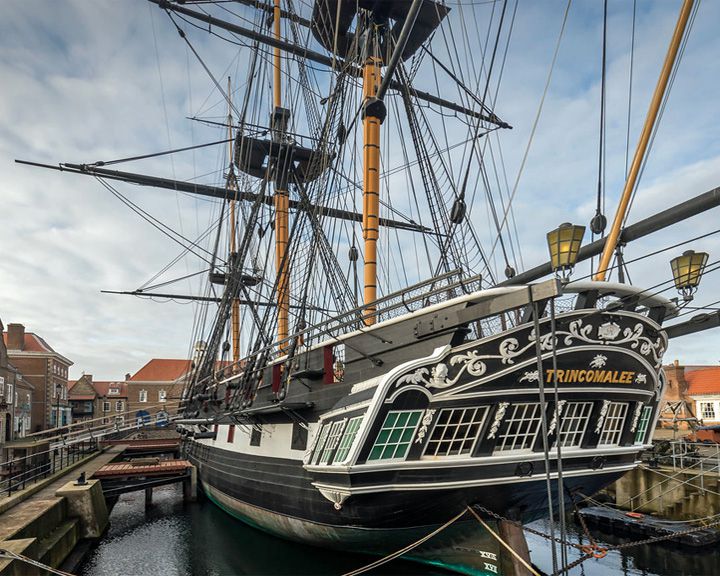 Trincomalee, HMS — British Leda-class frigate One of two surviving British frigates of her era. Holds the distinction of being the oldest British warship still afloat. LAUNCHED: 1817, October 12 → FATE: Restored made the centerpiece museum ship in Hartlepool, England. |
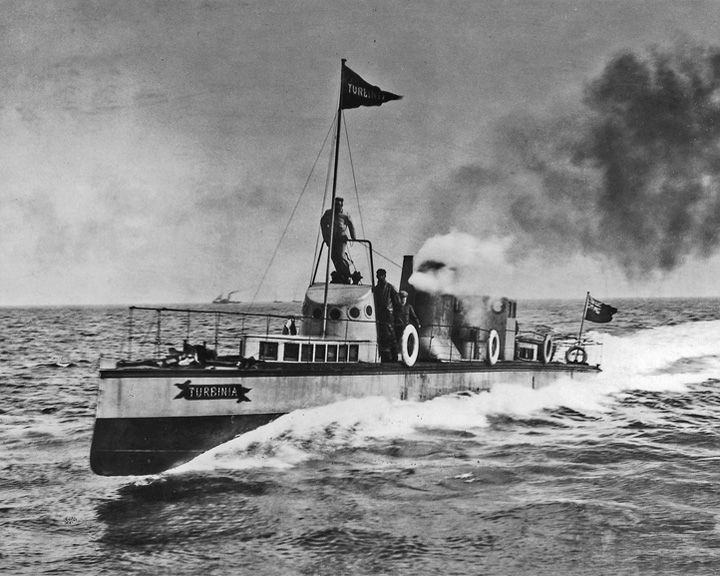 Turbinia — British steamship First steam turbine-powered steamship and the fastest ship in the world at that time at over 34 knots. She showed up unannounced at the Fleet Review for Queen Victoria's Diamond Jubilee at Spithead in 1897, racing up and down the ranks of other ships. LAUNCHED: 1894, August 18 → FATE: On display at the Discovery Museum at Newcastle upon Tyne, England. |
 Victory, HMS — English first-rate ship of the line (Galleon) Lord Nelson's flagship at the Battle of Trafalgar in 1805. She was refitted and repainted in 1800-1803, almost broken up in 1831, fitted up as a Naval School 1889, retired in 1904, and eventually restored. LAUNCHED: 1765, May 18 → FATE: Being restored at the HMNB, Portsmouth, England. |
 Warrior, HMS — British warship First British iron-hulled, armour-plated warship. She was the largest, fastest, most heavily armed and armored warship up to that time. LAUNCHED: 1860, December 18 → FATE: Currently berthed in Portsmouth, England as a museum. |
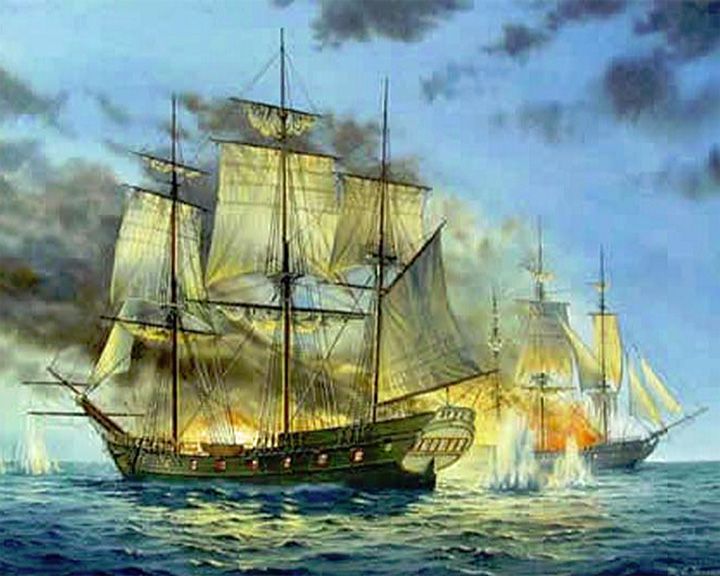 Whydah Gally — British sailing ship, square rigged three-masted Flagship of the pirate "Black Sam" Bellamy. The wreck was found in 1984. Artifacts from the wreck are on display at The Whydah Pirate Museum in Provincetown, Massachusetts. LAUNCHED: 1715 → FATE: Sank in a violent storm April 26, 1717. |
The number of British/English Ships on Exhibit listed is 23 The contents of this page are available under the Creative Commons Attribution-Share Alike 3.0 Unported license and the GNU Free Documentation License (GFDL). |
|
|
First Ship on each page
| |
| Page | Ship Name (Country and Type) |
| 1. | Belfast, HMS (British town-class cruiser) |
| 2. | Golden Hinde (English galleon) |
| 3. | Queen Mary, RMS (British ocean liner) |
British/English | |
| 1. | Belfast, HMS British town-class cruiser |
| 2. | Britannia, HMY British yacht |
| 3. | Cavalier, HMS British C-class Destroyer |
| 4. | Discovery British barque |
| 5. | Etoile du Roy British frigate |
| 6. | Golden Hind English galleon |
| 7. | Golden Hinde English galleon |
| 8. | Great Britain, SS British steamship |
| 9. | Holland I, HMS British submarine |
| 10. | Kathleen and May British three masted schooner |
| 11. | LCT7074, HM British landing craft, tank (LCT) |
| 12. | Maryland Dove American merchant vessel |
| 13. | Matthew English caravel |
| 14. | Medusa, HMS British Harbour defence motor launch |
| 15. | Queen Mary, RMS British ocean liner |
| 16. | SN.R4 British Mountbatten class hovercraft |
| 17. | Sundowner British motor yacht |
| 18. | Trincomalee, HMS British Leda-class frigate |
| 19. | Turbinia British steamship |
| 20. | Victory, HMS English first-rate |
| 21. | Warrior, HMS British warship |
| 22. | Whydah Gally British sailing ship |
|
About the Data There are more than 400 ships in this database, but the initial list is only for famous ships names that begin with letters "A-B". For other listings, use the country and type tabs. Touching (or cursor over) a ship image produces an enlargement. Touch anywhere else (or move the cursor off the image) to close the larger image. Touching (or clicking on) any underlined name will link to a page with more information. Although submarines are usually called boats, they are grouped with ships here. Most of the information comes from Wikipedia. |
^
Other Pages in Names Galore: | |
Famous Cowboy Names Sports Team Names Other Name Lists | Name Generators Naming Fun Stories about Names |